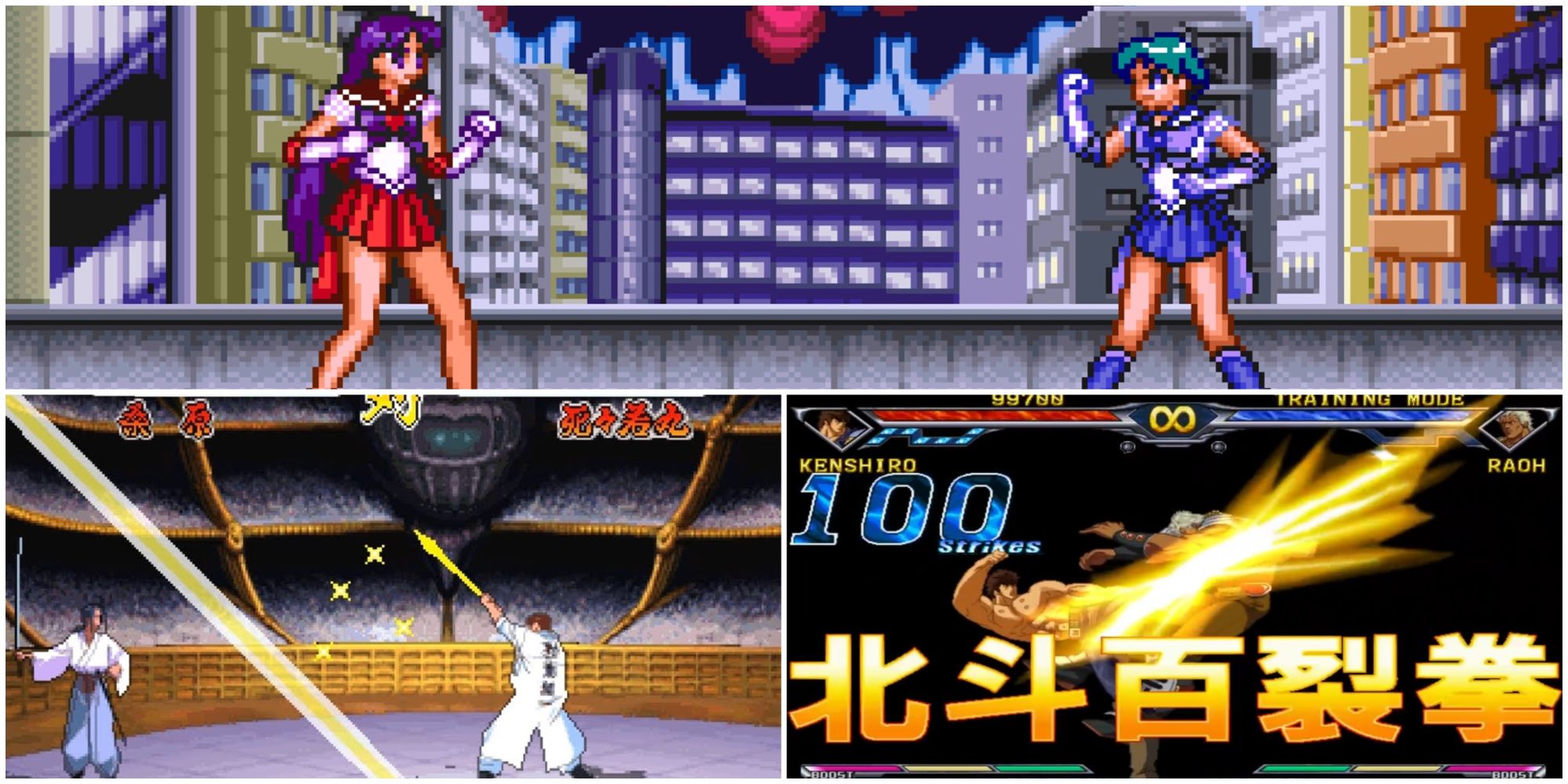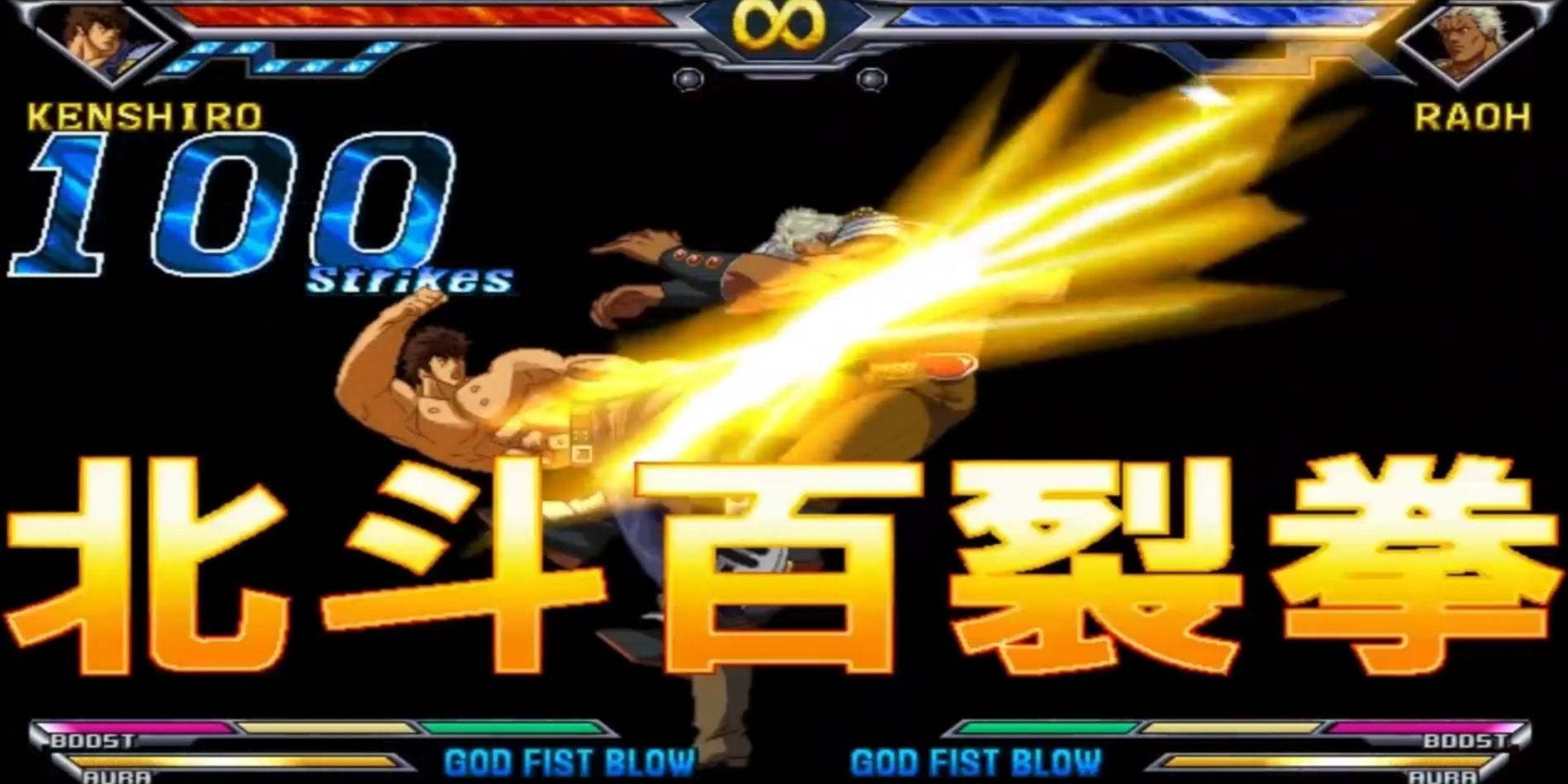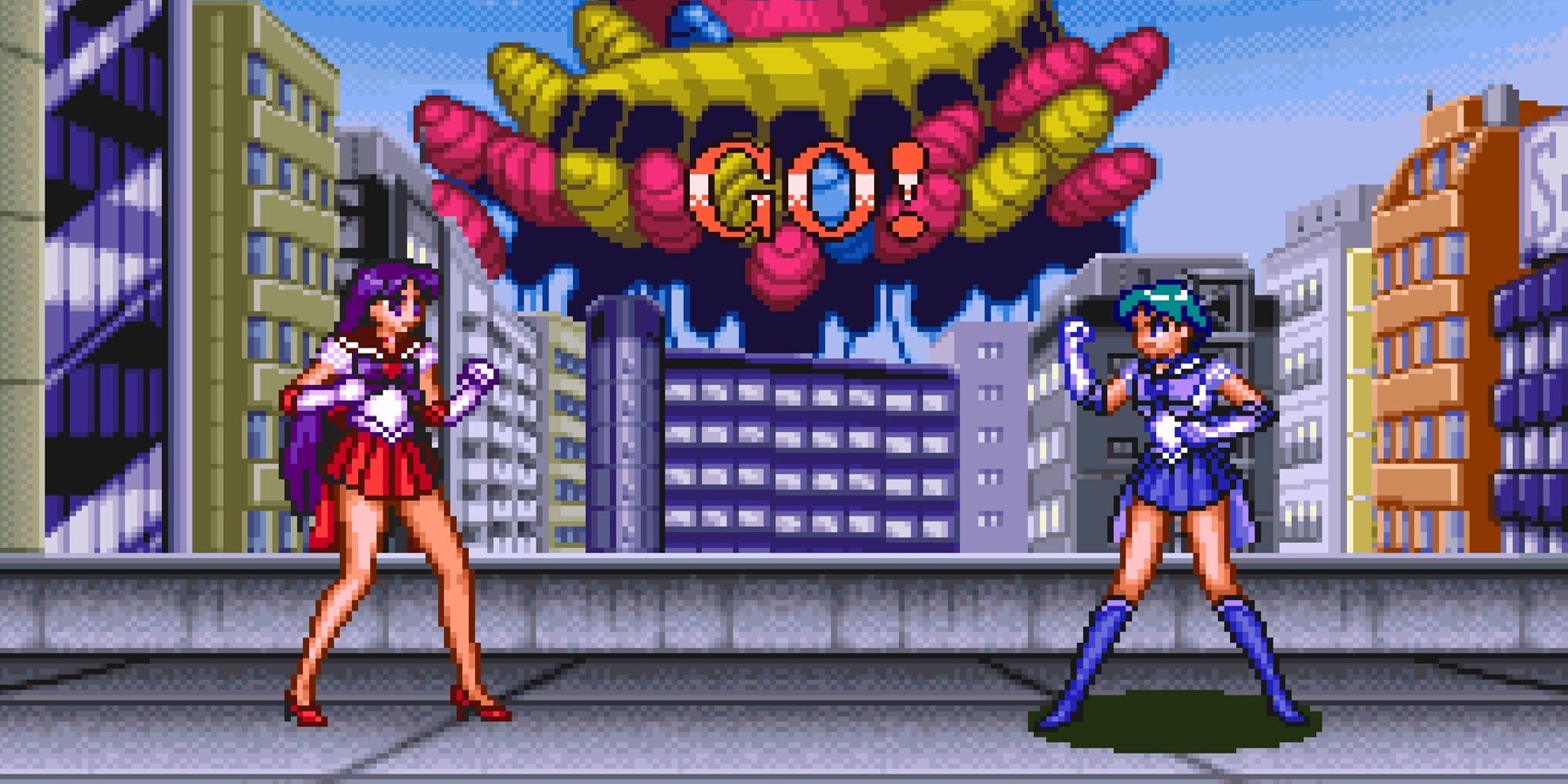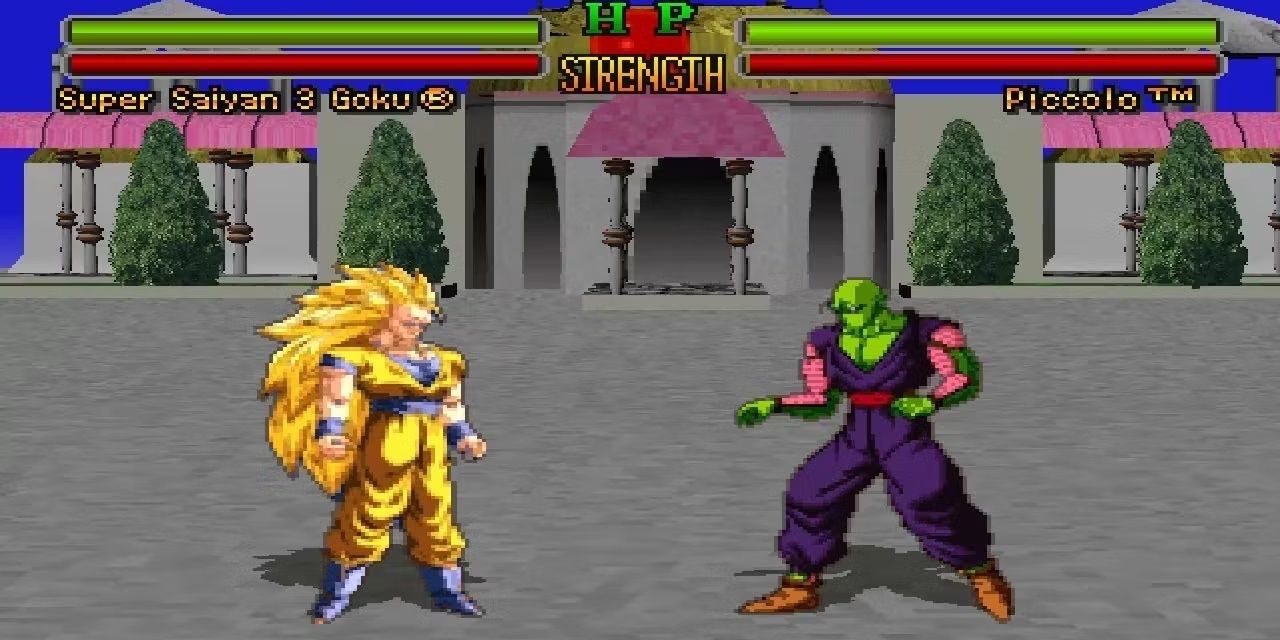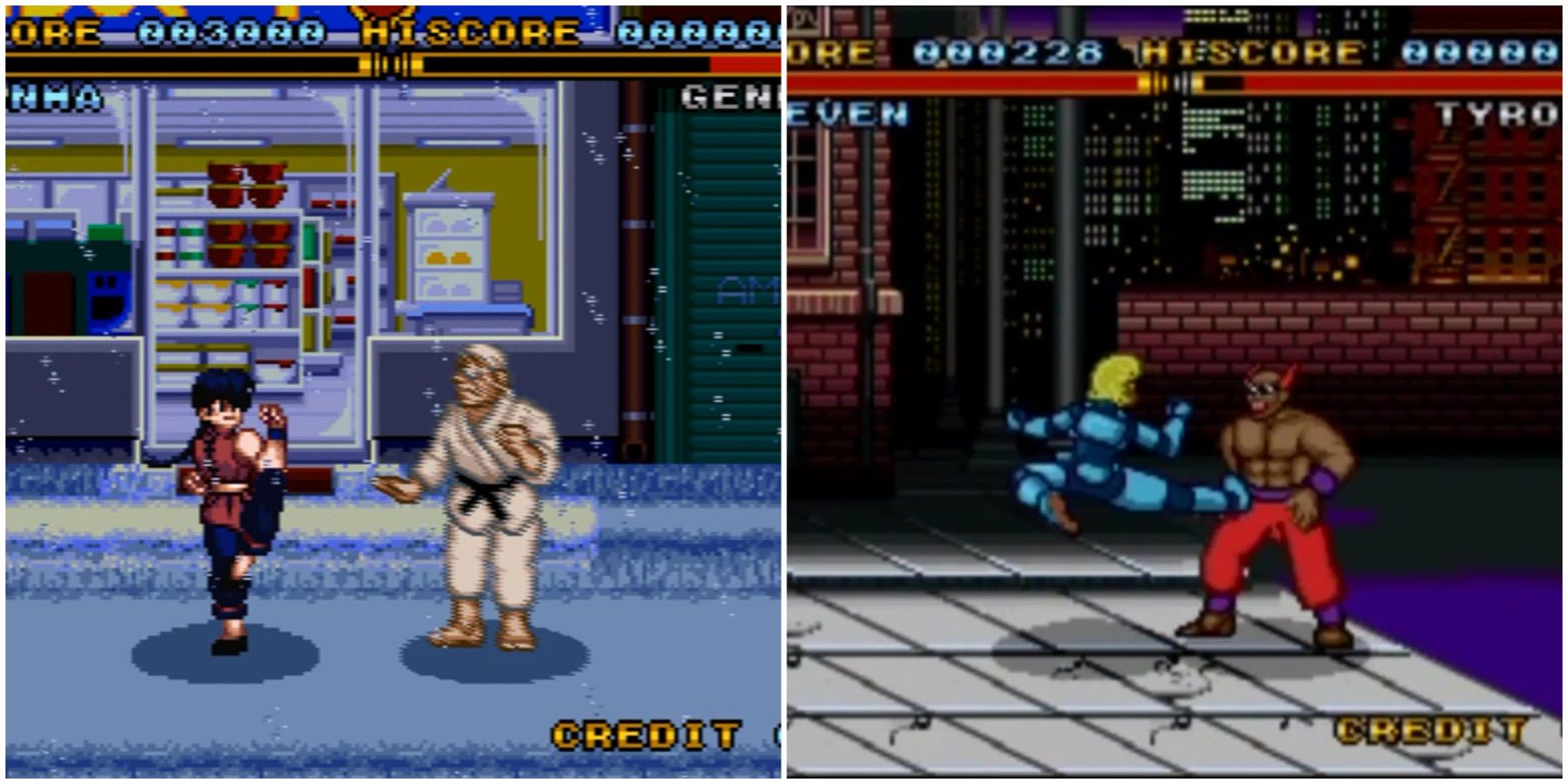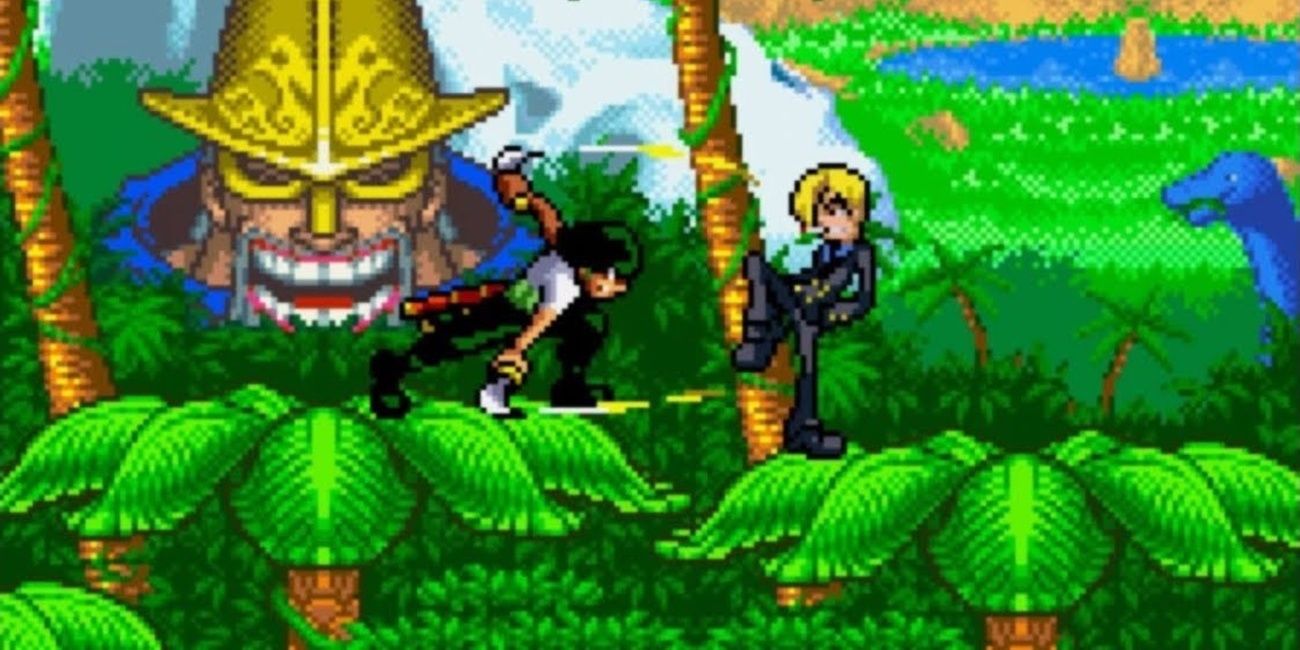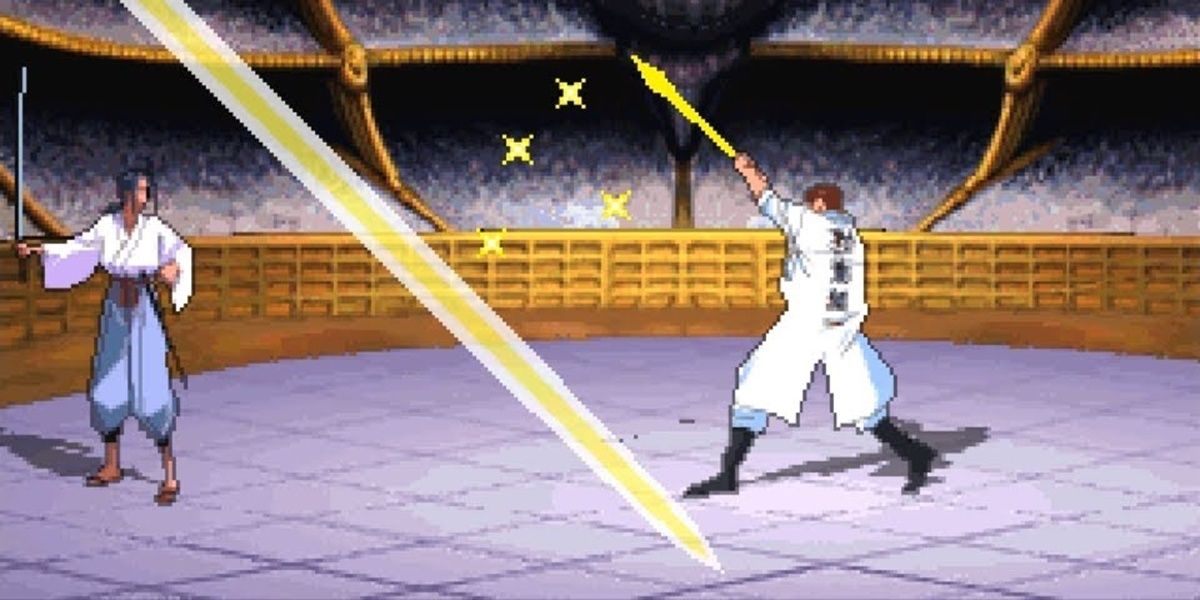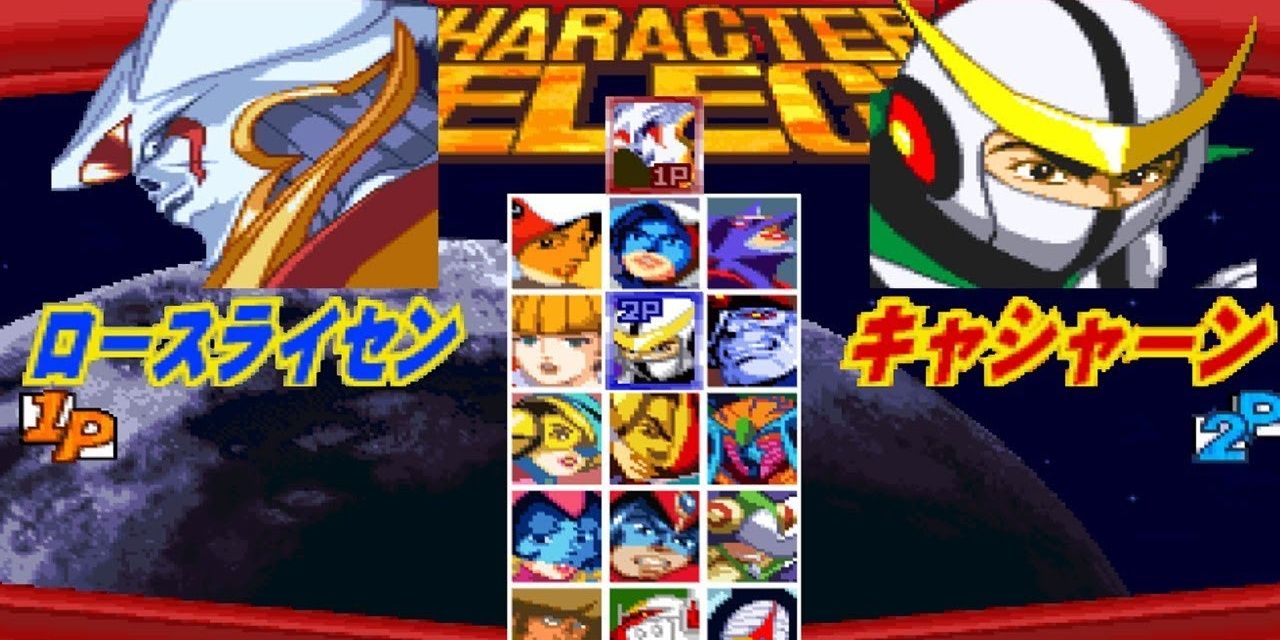Nowadays, ‘anime fighters’ don’t have to be based on an actual anime series to fit that bill. Most people today associate it with games like Guilty Gear or BlazBlue, with their air dashes, aerial combat, and crazy character designs. The Dragon Ball Z: Budokai games don’t quite fit that description, despite literally being fighting games based on an anime.
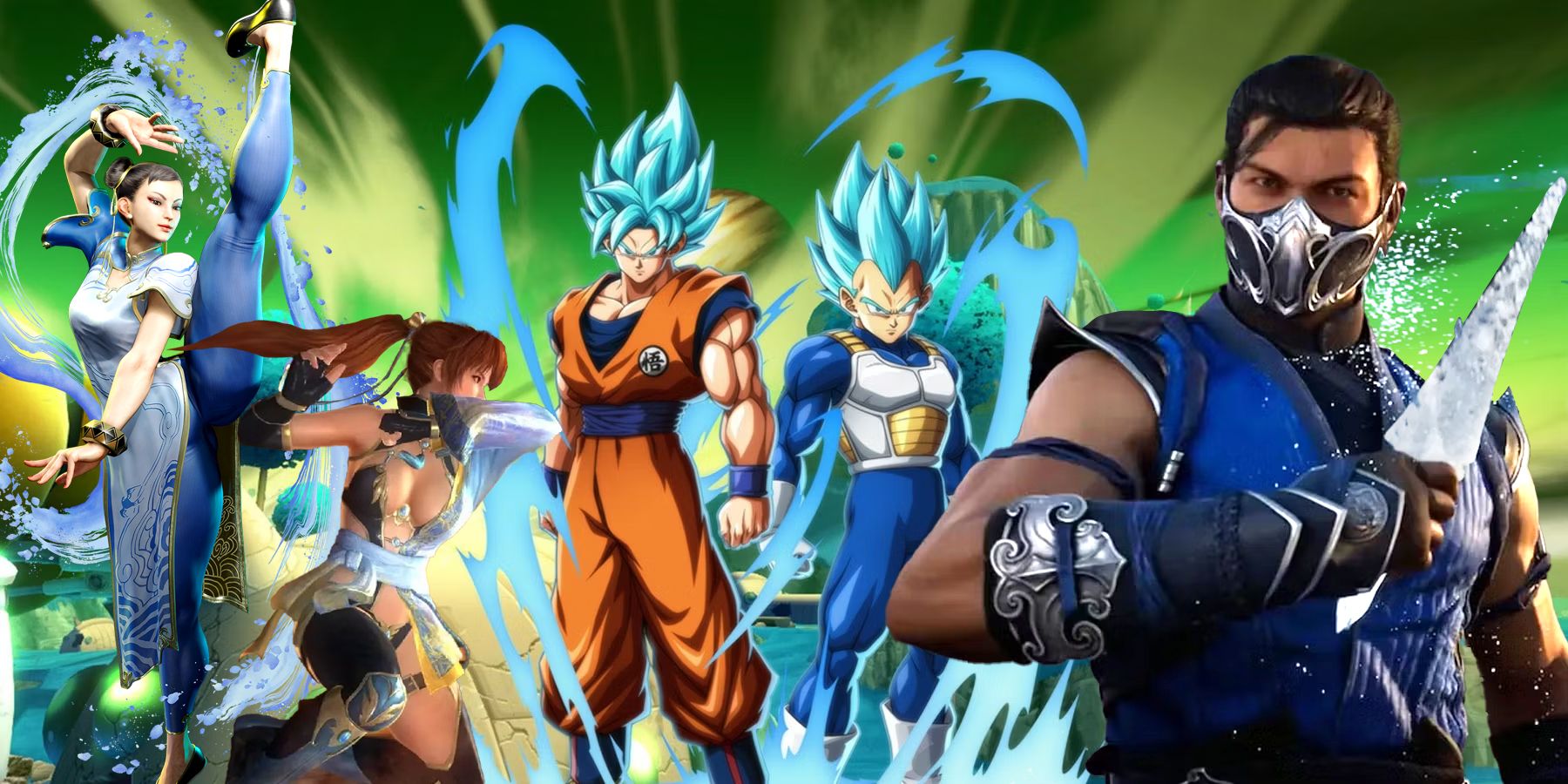
The 14 Best Fighting Games For Beginners, Ranked
Fighting games can be pretty intimidating for newcomers to the genre. The following games, however, are a good place to start.
When it comes to licensed anime, developers seem more keen on making them arena brawlers, where the characters can run around an environment. But they’ve become so common that fans would like to see them do something different with the IP. They could even turn some classic anime into traditional fighting games! However, there are reasons why these examples, ranked by their obscurity, fell under the radar.
7 Fist of the North Star
ArcSystem Works Turns Cast of Iconic Shōnen Anime into the Harlem Globetrotters
- Developer: ArcSystem Works
- Platforms: Arcade, PlayStation 2.
- Release: December 2005 (Arcade), March 2007 (PS2).
There are anime fighters out there that are literally based on anime, like Dragon Ball FighterZ. It took the Guilty Gear formula, mixed it with Marvel Vs Capcom-esque gameplay, and threw in unique Dragon Ball elements. Fans could even recreate scenes from all 4 main series, and some of the movies, via its ‘Dramatic Finishes’. However, it wasn’t the first game to do that. ArcSystem Works did it 20 years prior with Fist of the North Star.
It essentially played like Guilty Gear X2. Except if certain characters got to finish the other off with a Fatal KO move, they’d recreate scenes from the anime itself. It’s a nice touch, and the game is fun at a casual level. Beyond that, it’s notoriously broken. Nearly every cast member had their own infinite combo, with the most infamous being the ability to bounce the opponent off the ground like a basketball until their health bar was empty.
6 Sailor Moon
Infamously Broken Shojo Fighter Becomes a Cult Classic Among Fighting Game Pros
- Developer: ArcSystem Works.
- Platform: Super Famicom/SNES.
- Release: December 1994.
Just because a game is broken doesn't mean it's not worthwhile. If anything, they might even add to its fun factor. Fist of the North Star is busted but entertaining. Yet ArcSystem Works made another anime fighter that was even more broken and crazy: Bishōjo Senshi Sailor Moon S: Jōgai Rantō!? Shuyaku Sōdatsusen (‘Pretty Soldier Sailor Moon S: A Street Fight!? Superstar Struggle’), or just Sailor Moon for short.
It was a Street Fighter 2 clone with the Sailor Scouts battling it out against each other. Its mechanics were completely unbalanced, with some characters having more or less health than others, infinite combos, instant teleports, etc. But its lack of balance made it a cult favorite, earning spots at EVO 2018 and 2019, and getting coverage from popular players like desk, Justin Wong, and Daigo Umehara.
5 Dragon Ball Z: Ultimate Battle 22
SNES Fighter Makes PS1 Debut 8 Years After Its Original Release
- Developer: Tose.
- Platform: PlayStation.
- Release: July 1995 (Japan), March 2003 (US).
There are plenty of Dragon Ball Z fighting games, from one-on-one brawlers to arena fighters to beat ‘em ups. But it wasn’t always that way. By the time fans in the West were getting to know Goku and co, DBZ was nearing its end in Japan and waiting to shift to GT. This meant they got plenty of games that wouldn't reach North America for decades, like the Super Butōden series on the SNES.
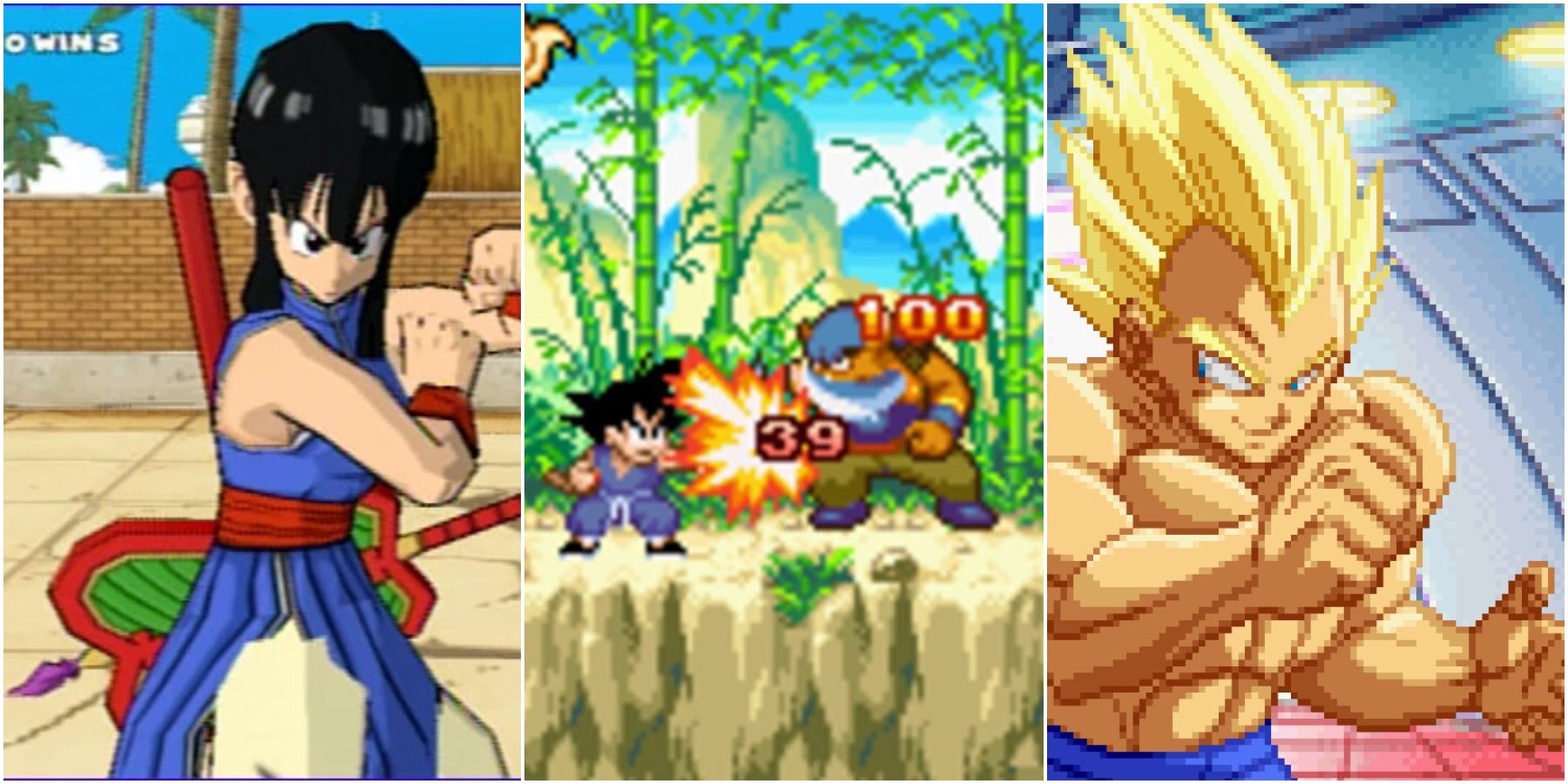
7 Forgotten Dragon Ball Games That Are Underappreciated
Dragon Ball is one of the most popular anime around, and there are several games dedicated to the franchise, but some are less known than others.
But one game did make it to the Far West. Dragon Ball Z: Ultimate Battle 22 was a 1995 SNES game ported to the PS1 in 2003. Unlike Sailor Moon, its lack of balance just added to its stodgy gameplay and aged, cel-animated graphics. For a mid-1990s 16-bit game, it was fine. But for an early 2000s PS1 release that cut stuff out from the original SNES game (e.g. special cutscenes for certain encounters), it was underwhelming.
4 Ranma ½: Chōnai Gekitou Hen
Ranma Gets Lost in Customs and Replaced with a Cyborg Stand-In
- Developer: NCS.
- Platform: Super Famicom/SNES.
- Release: March 1992.
Rumiko Takahashi’s classic tale of love and gender-bending received a few games during its run. Fans might remember Ranma ½: Hard Battle, a decent brawler that made it worldwide in 1993. But it had a predecessor that technically reached the West too. Like how Doki Doki Panic became Super Mario Bros 2, Japan's Ranma ½: Chōnai Gekitō Hen (Street Combat Chapter) became the US and Europe's Street Combat.
The whole cast was redrawn to look more legally distinct from Takahashi’s manga, with Ranma and his female alter-ego, Ranko, becoming Steven and Robo-Steven. They’re also the only 2 playable characters against a host of bosses, which was actually the norm for pre-Street Fighter 2 fighting games. However, SF2 would reach the SNES in June 1992, making R½: CGH feel outdated within months, and Street Combat practically antiquated on its 1993 US release.
3 One Piece: Grand Battle Swan Colosseum
2D Smash Bros with the Strawhat Pirates
- Developer: Dimps.
- Platform: Bandai WonderSwan Color.
- Release: July 2002.
So far, the reason for these games’ obscurity is pretty obvious: they’re either ironically good or unironically bad. But One Piece: Grand Battle Swan Colosseum is actually a rather good handheld fighter akin to Super Smash Bros. Only Luffy & co can pull off Final Smash-like supers when they maxed out their Bombstock gauge. It also had a card-collecting minigame, in-game challenges, and unlockable characters.
The problem was that it was made for the Bandai WonderSwan, a Japan-only handheld whose luck ran out before it was released. The company was thinking it could get one-up on the Game Boy, only for Nintendo to release the Game Boy Color shortly before the WonderSwan’s release. It did get a color version, which OP: GBSC was made for, but Bandai stopped supporting the system altogether in 2003.
2 Yu Yu Hakusho
Underrated Fighter on an Underrated Console
- Developers: Hudson Soft, Tose.
- Platform: 3DO Interactive Multiplayer.
- Release: December 1994.
Speaking of unlucky platforms, the 3DO was meant to be the next step up from the 16-bit machines, with 3D graphics and a planned (but ultimately canceled) online service. However, its high price point and lacking games meant that accolade went to the PlayStation instead. Still, unlike other consoles of the era, the 3DO did manage to develop a cult following across the world thanks to its more experimental titles.
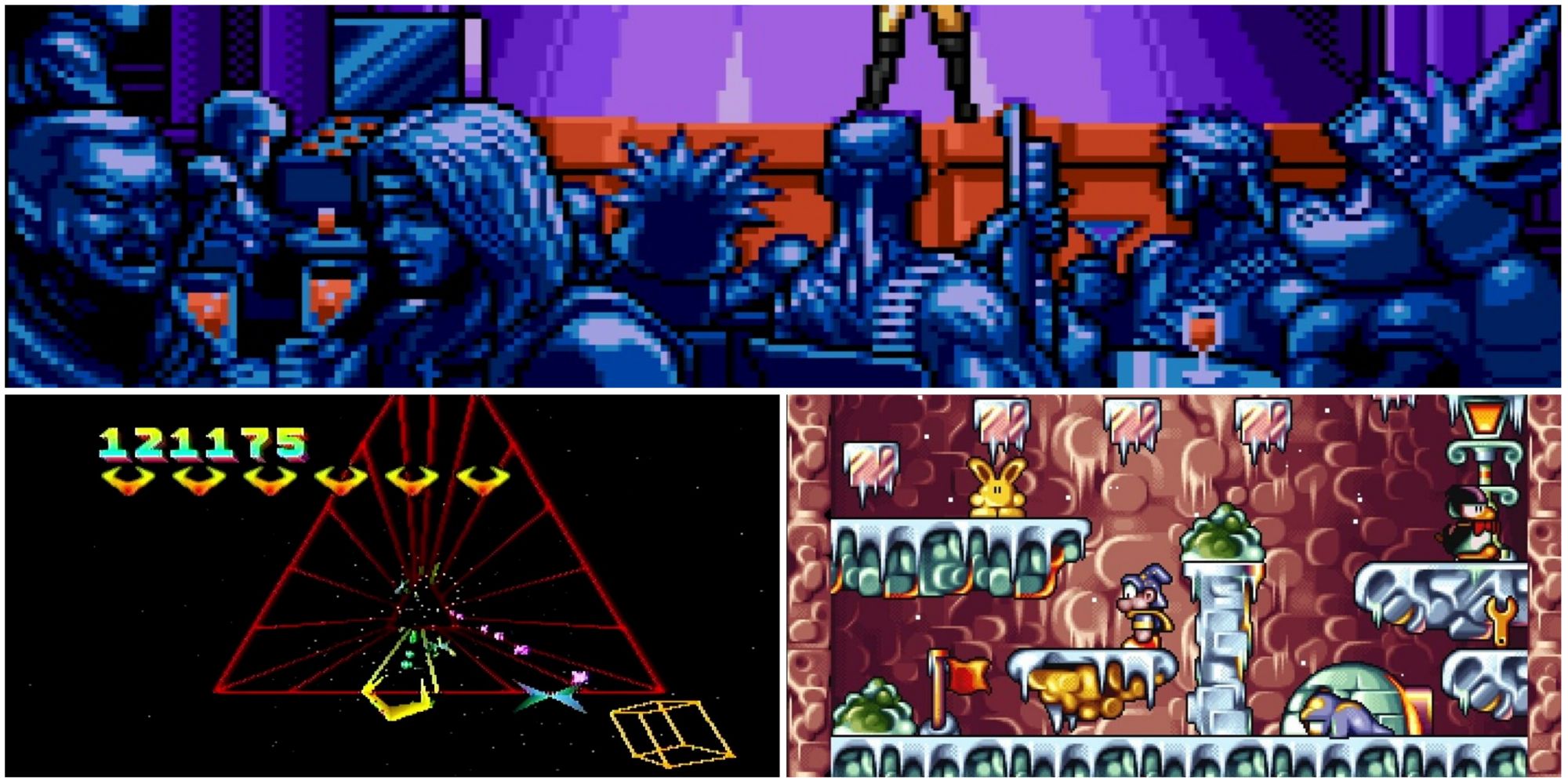
8 Good Games On Failed Consoles
Although these consoles didn't last, they possessed some great games in their libraries.
It also received a Yu Yu Hakusho fighting game! It resembles the DBZ Butōden games with its use of real cel-animated sprites (courtesy of Studio Pierrot) against the backgrounds. Granted, it didn’t look that much better than a Famicom game and could get quite laggy in places. But it made good use of the 3DO's controls, and it had a neat story mode that replicated scenes from the anime.
1 Tatsunoko Fight
Tatsunoko Without Capcom
- Developer: Eleca.
- Platform: PlayStation.
- Release: October 2000.
Lastly, Tatsunoko is an iconic animation studio, though its most famous properties have a bit of a generation gap outside Japanese shores. Gen X’rs may remember Battle of the Planets, while their younger Millennial and Gen Z siblings might recall Teknoman and Casshern Sins. But their original 1970s equivalents and Hurricane Polymer are perhaps too obscure.
This is why Tatsunoko Fight stayed in Japan, and saw 3 characters (a Hero, Supporter, and Arch Rival) from Science Ninja Team Gatchaman, Tekkaman, Casshern, and Hurricane Polymer each battle it out to save the world from the Jaleizer Empire. The game plays quite well too. It's not stellar, but not busted either. It’s a good pick for the oldest otaku if they’ve already completed Tatsunoko Vs Capcom.
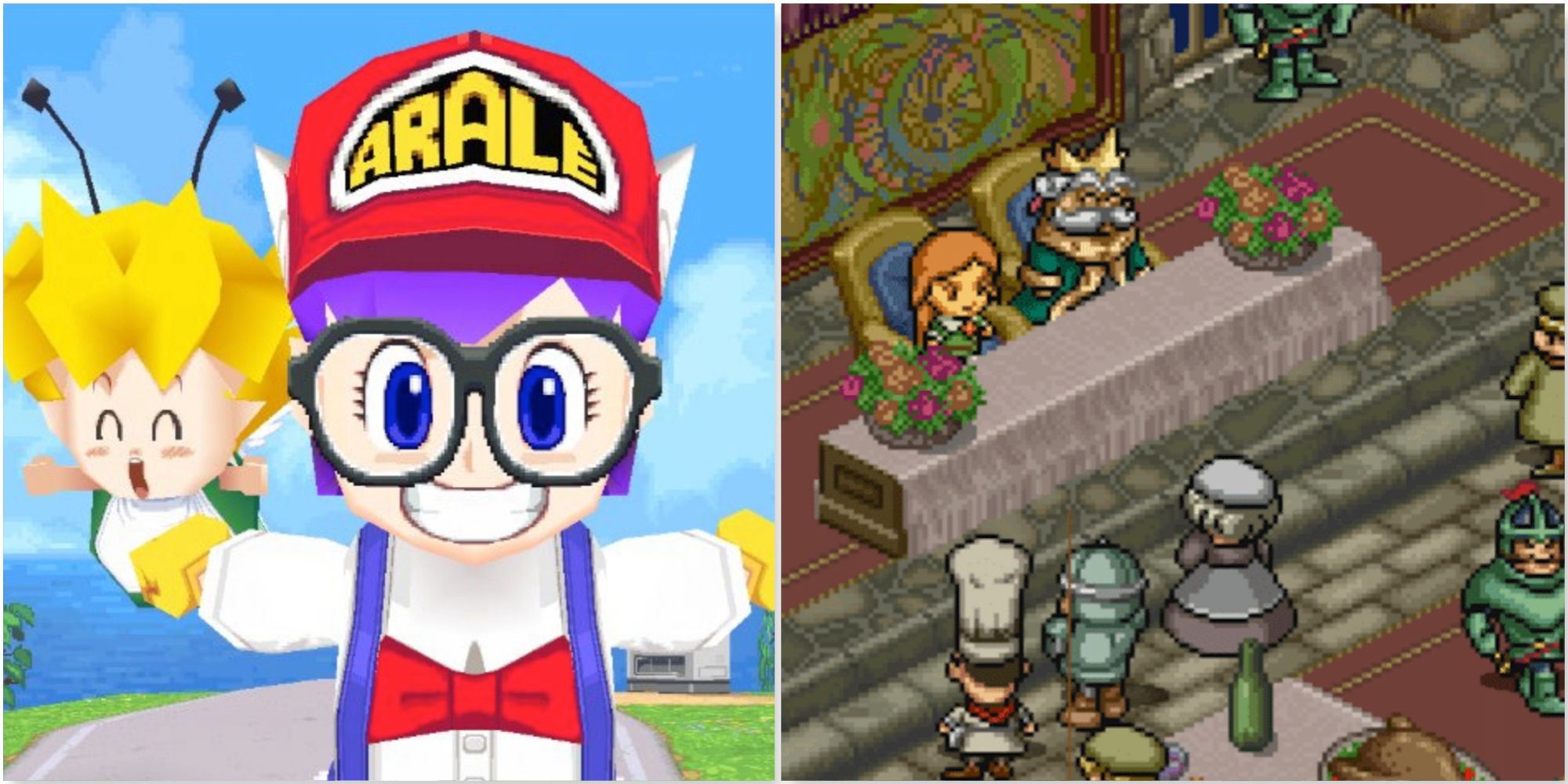
8 Best PS1 Anime Games, Ranked
Games based on an anime series have been common even on earlier consoles like the first PlayStation.

